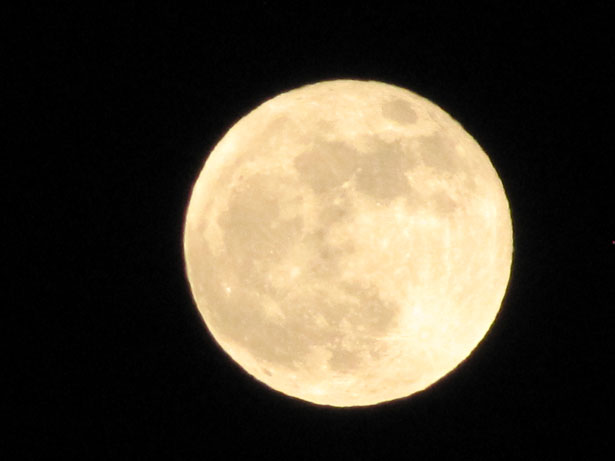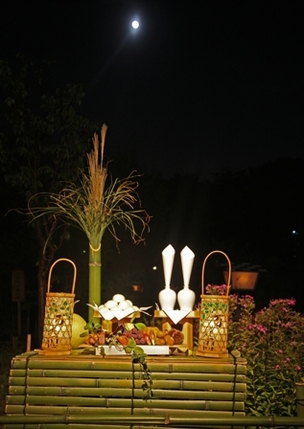
Were you able to see “The Harvest Moon?”
“The Harvest Moon” appears on August 15th of lunar calendar. (It fell on September 19th this year.) Literally expressed in Japanese Kanji characters, written as “the moon in the middle of autumn,” it is one of the customs from ancient China that people set up an occasion to view the moon on the night exactly halfway of autumn, July through September on lunar calendar. Since autumn is the season of harvests, it is said that people regarded the moon as a God and expressed their gratitude for a rich crop. It is said that this custom started because people in the ancient times were always aware of and never failed to show gratitude for what they were given by the nature.
When viewing the harvest moon, we place traditional offerings, rice dumplings and Japanese pampas grass in the place where the moon can be seen clearly. Rice dumplings are made from steamed rice, kneaded into small balls which to resemble the moon. The numbers of dumplings to offer also have traditional rules: 12 as to the total numbers of the full moon appeared throughout the year (13 in leap year), or 15 as to refer the fifteenth night (the full moon takes place on the 15th day of the month).
Viewing the harvest moon is called “Otsukimi” and this custom has been passed on to the present days. Many shrines in Japan hold moon viewing events and enjoy reading haiku or playing traditional ancient musical instruments. The harvest moon is not always the full moon, but fortunately this year, we were able to see the beautiful full moon. (It will be in 2021 when we can see the full moon on the night of the harvest moon next.)
 In addition, Japan has its own custom to view the moon on September 13th of lunar calendar, called “Jyu san ya,” meaning “the thirteenth night. The moon on the thirteenth night is said to be beautiful second to the harvest moon. And if you view the harvest moon, make sure to view the moon of the thirteenth night at the same spot because it is considered to be less favorable for not viewing both as it’s called “katatsukimi,” single moon-viewing.
In addition, Japan has its own custom to view the moon on September 13th of lunar calendar, called “Jyu san ya,” meaning “the thirteenth night. The moon on the thirteenth night is said to be beautiful second to the harvest moon. And if you view the harvest moon, make sure to view the moon of the thirteenth night at the same spot because it is considered to be less favorable for not viewing both as it’s called “katatsukimi,” single moon-viewing.
Mukojima Hyakkaen「The Moon Viewing」
Cited from “Let’s go to the park! By Tokyo Metropolitan Park Association
http://www.tokyo-park.or.jp/announcement/032/detail/4557.html
Unless you are a farmer, you may not enjoy the moon viewing for the original purpose.
But why not taking a little break between your busy day and appreciate the beautiful moon in cool evening wind of autumn.
